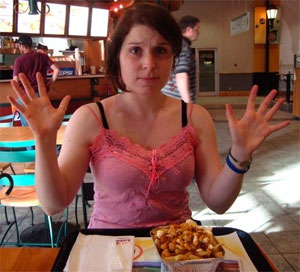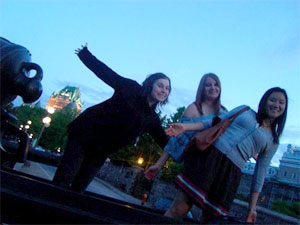| ||
| ||
|
In myÌýprevious article ("Pas un mot d'anglais," Dalnews, May 8), I discussed how recent experiences at Dal made me realize—despite having fulfilled my language credit with a year of mind-expanding, brain-bending Chinese—that my French skills were seriously lacking. Casting around for a quick fix, I stumbled upon Explore, an immersion program run by Council of Ministers of Education, Canada (CMEC) to help even the most certified of anglophones (read: me) delve into a second language.
Explore is offered at a number of Canadian universities and, while travel costs are the student’s responsibility, books, tuition, meals and residence are paid for. A sweet deal? Bien sur. My application was accepted, I was admitted to the Ecole de Langues at the University of Laval. With considerable trepidation (and far too many socks), I road-tripped to Laval, where I would stay for five weeks of immersive French classes and cultural activities.
As a life-long Maritimer, my first few days in Quebec City were an extended case of culture shock. How did I find friends? Once friends were found, how did we order pizza? How did I ask for a change room at the mall? How did I seek out classes in the labyrinthine Laval campus? (Also, the squirrels in Quebec are huge. This is the one thing I never got over. They’re dark grey, half the size of cats, and have a nasty glint in their eye.) But each new linguistic roadblock began to represent a challenge: an opportunity to utilise the French skills I spent three hours cramming in every morning. Soon, I was chatting en francais without a second thought.
Ìý
Not that it was an easy journey. Despite nine years of compulsory French in public school, I had retained virtually nothing of the language: at Laval, I was placed in the ‘enriched elementary’ class. There, I joined a group of about 30 other students—not only from across Canada, but also the United States and even Europe and South America—to study the more neglected of our two national languages. The instruction was fast-paced, intense and extremely useful; not merely standard classes in grammar, but also in oral expression and phonetics, ensuring that students could not only speak French but also be understood. Classes were generally over by lunch, and in the afternoons, cultural activities were arranged—you could head to Old Quebec for a gelato, visit a museum or art gallery, or join in a round of basketball or ultimate Frisbee. In the evenings, a French movie might be screened (best of the bunch: Bon Cop, Bad Cop), or you could catch up with new friends at the university pub.
My last day of Explore consisted of two exams, a closing ceremony, and many tearful hugs with new friends. Next year, I’m planning to reapply; the applications of first-time students are favoured, but it’s possible to attend the program twice or more. In the meantime, I’ve been recommending the program to basically everyone I know. If you want to see the wonders of Quebec, meet people from around the world, and pick up a second language into the bargain, this is the program for you. Bonne chance!



